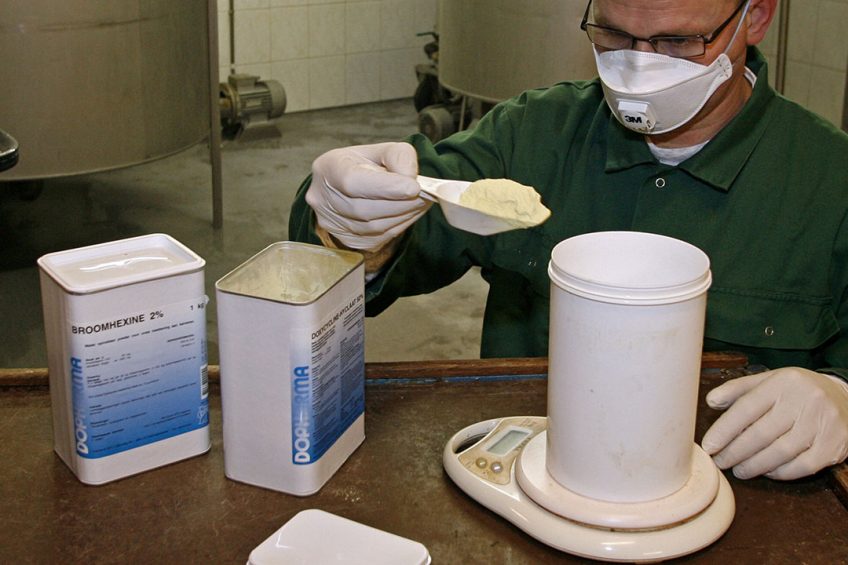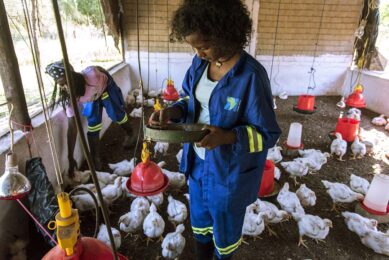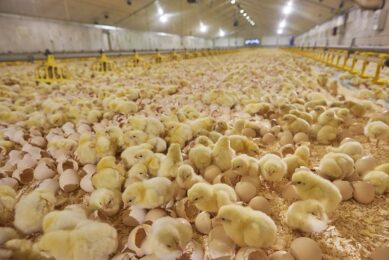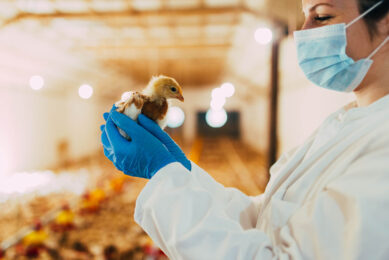UK antibiotics sales for poultry show upward trend

Challenges from novel pathogens and very poor weather contributed to a slight rise in antibiotic use in the UK broiler and layer sectors last year.
However, figures for use of the Highest Priority Critically Important Antibiotics (HP-CIAs) showed a further decline, according to results from the UK Government’s Veterinary Medicines Directorate.
In its annual Veterinary Antimicrobial Resistance and Sales Surveillance 2019 report, the VMD said 19.7 tonnes of antibiotic active ingredient were used in the turkey, broiler and duck sector. Broken down, this represented 42mg/kg total per unit for the turkey sector (down 4.7mg/kgs on 2018 statistics), 17mg/kg in the broiler sector (+5mg/kg) and 1.6mg/kg in the duck industry (-0.1%). The long-term trend still shows a significant fall in use, especially in turkeys, albeit from higher original levels.
Layers
In the laying hen sector, 4.8 tonnes were used throughout 2019. Actual daily bird doses/100 bird days was 0.68%, representing a 0.13% rise. The publication of the VMD report coincided with the launch of new goals, facilitated by the industry body Responsible Use of Medicines in Agriculture Alliance (RUMA), which were set out in its “Targets Task Force Report 2020”.
Cat McLaughlin, RUMA chair, said the last set of targets had helped halve sales of antibiotics across the UK farm animal sector, taking the UK to have the fifth lowest usage in Europe, above only Iceland, Finland, Norway and Sweden. Ms McLaughlin said that with over 75% of original targets now achieved early or on track to be achieved by next month’s deadline, the time was right to “reset” in some sectors with refreshed challenges. Both the laying hens and poultry meat sectors met their 2016-2019 targets. The laying hen industry had to maintain less than 1% birds medicated/day and less than 0.05% HP-CIA days medicated. The poultry meat industry had to reduce overall use in broilers to 25mg/kg or less and 50mg/kg in turkeys.
The UK farming industry has responded extremely well to the targets. Our original aim of lowering overall antibiotic use, and in particular HP-CIAs, has been categorically achieved in the face of some extremely challenging conditions,” she added.
Targets
Many of the new targets are focusing on the cattle, sheep and pig sectors, where reductions in antibiotic use have taken place but at a slower rate than in the poultry industry. For example, the pig sector is promoting best-practice guidelines to reduce post-weaning diarrhoea, a common cause of antibiotic use. Gamebird farmers and vets will be focusing on improved practices, research into disease and farm assurance. The poultry meat sector is joining the laying hen industry in opting to hold its current targets. Preventative use has been phased out completely in these sectors, meaning many animals receive no antibiotic treatments at all in their lifetime.
 Antibiotic Reduction
Antibiotic Reduction
This special edition explores the latest methods for raising healthy livestock without the use of preventive antibiotics.
However, they do face new challenges due to changing production systems, disease threat and a warming climate, and will be focusing on managing these effectively through increased vaccine development and availability, surveillance and improved management practices. Professor Peter Borriello, VMD chief executive, welcomed the RUMA report: “The ambition now outlined in this report, alongside the proactive, holistic approaches and focus on behaviour change principles gives me every confidence that they will once again succeed.”
Details of the new RUMA targets, which were launched on European Antibiotic Awareness Day (18 November) can be found at www.ruma.org.uk/targets
Join 31,000+ subscribers
Subscribe to our newsletter to stay updated about all the need-to-know content in the poultry sector, three times a week. Beheer
Beheer








 WP Admin
WP Admin  Bewerk bericht
Bewerk bericht